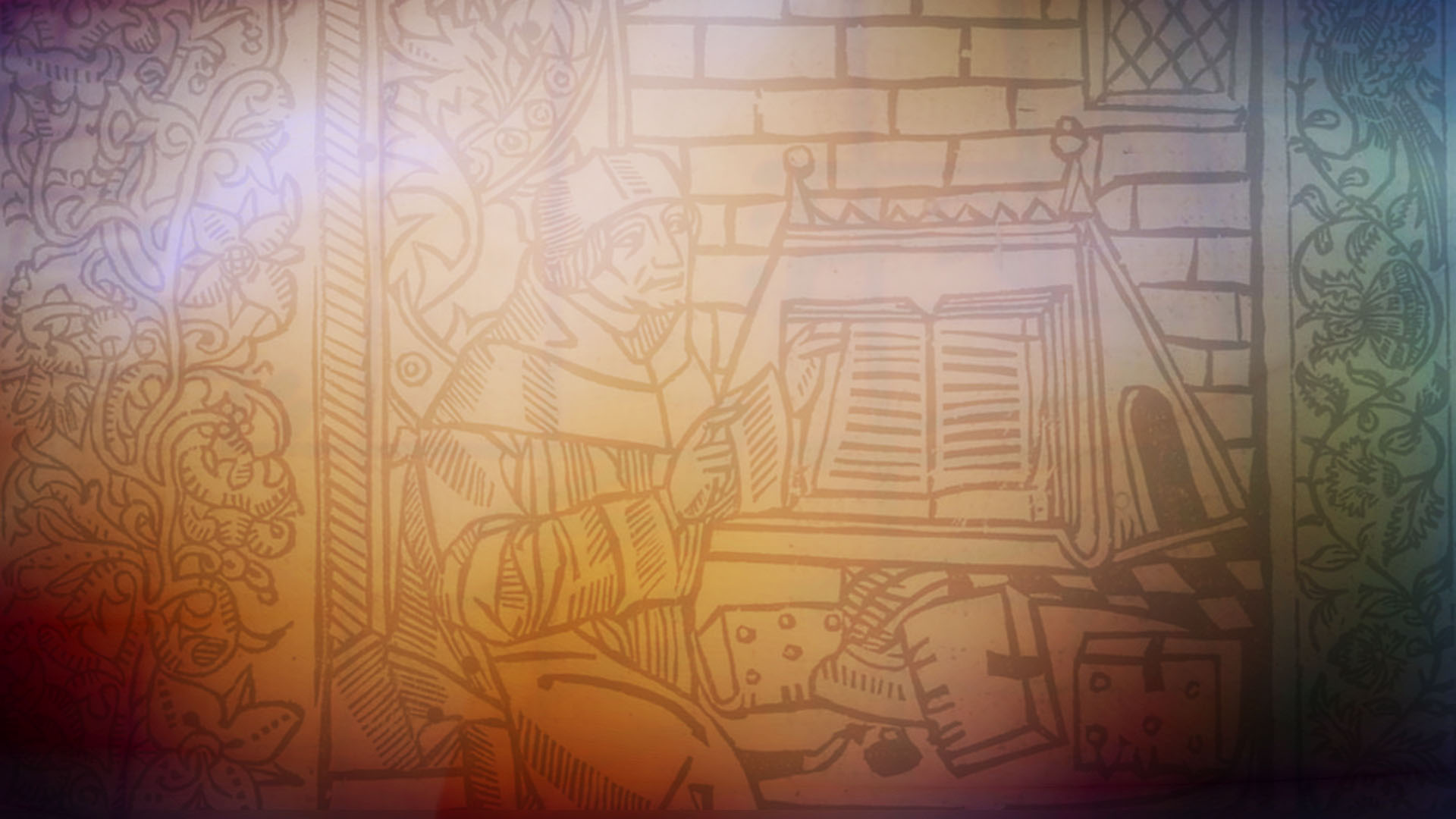
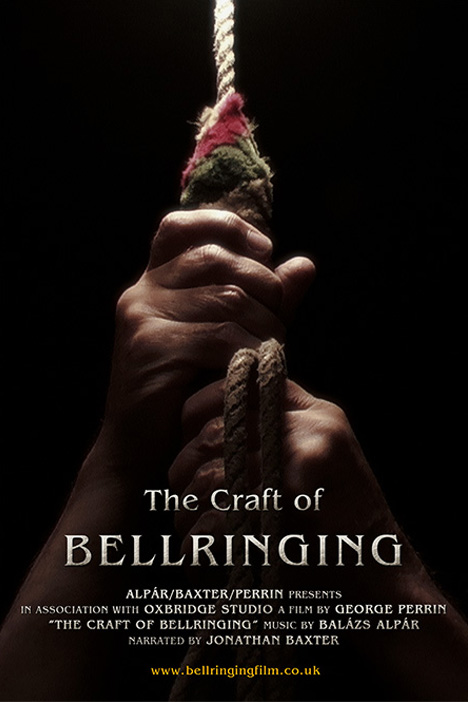
The Craft of Bellringing is a documentary made in 2006 about English-style bellringing.
From the origin of bells to modern-day ringing, from small-town parishes to some of the most famous cathedrals, the film covers virtually all aspects of the world of ringing.
Featuring the first edition of Tintinnalogia, the very first book to be written about bellringing, and exclusive interviews with leading experts in the field, the film also takes us on an intellectual journey that explores the craft’s rich cultural heritage.
The Craft of Bellringing (2006, 48min)
Chapters
[2:10] HISTORY | In an interview with Dr. John Eisel, steward of the Central Council Library, we explore the first edition of the Tintinnalogia, the first book to be published about bellringing in 1668.
[7:15] PARTS OF THE BELL | Frank Lewis from the Kent County Association explains how English-style bells are hung. The dangers of ringing are also shown as we find out what happens when the stay breaks.
[14:35] METHODS | Michael Moreton, tower captain at South Croydon gives a comprehensive introduction to the basis of methods.
[24:10] PRACTICE | We pay a visit to the ringers at Addington at their practice night led by the tower captain, Eric Godfrey. We accompany them on an outing to the glass tower in Basildon.
[29:50] CATHEDRALS | Dr. Ian Campbell, ringing master at Exeter Cathedral gives an insight into cathedral ringing at an open day. We also visit Liverpool Cathedral where the world’s heaviest set of bells can be found.
[39:00] SOCIETIES | Ringing societies represent the elite in bellringing, where ringing methods are taken to perfection.
Towers featured
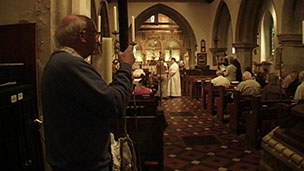
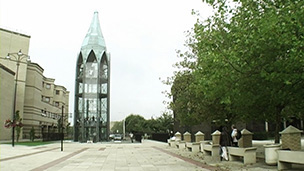
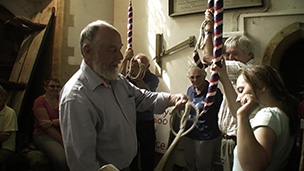
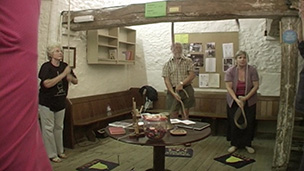
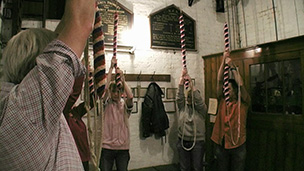
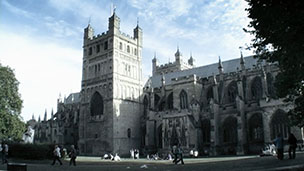
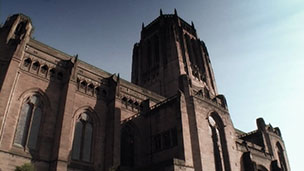
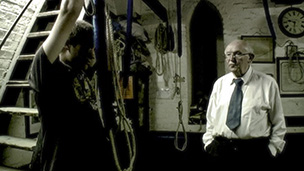
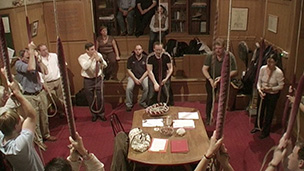
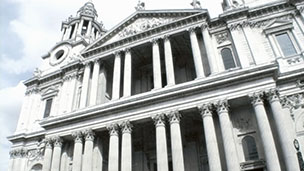
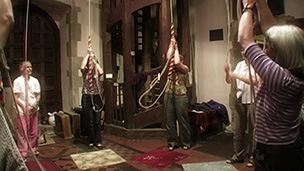
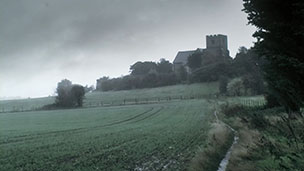
Making of The Craft of Bellringing
(The article below appeared in the Ringing World on 1st December 2006.)
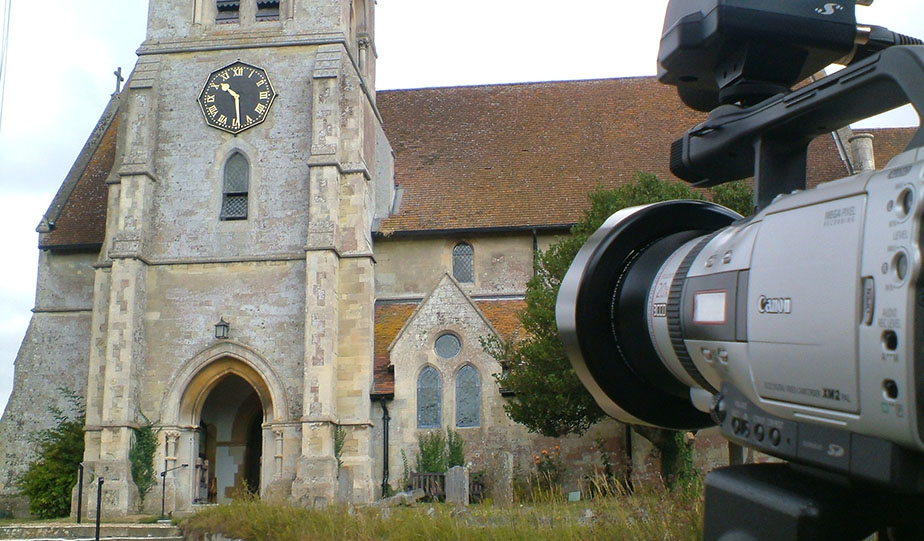
I became interested in bellringing at an early age and since becoming a filmmaker I became determined to make an authoritative documentary about the exercise.
It all started at our home tower of St. Mary’s Addington in Surrey. I turned to our tower captain, Eric Godfrey, who knew almost everyone in the ringing fraternity and who was able to provide me with introductions to ringers with specialist knowledge of the various aspects of bellringing.
The history of ringing
For the history of ringing, Chris Ridley showed me the library of St. Paul’s and recommended I contact Dr. John Eisel, steward of the Central Council Library. I was looking forward to meeting John, as most of the material I read during the course of my preparation consisted of the books and articles that he had written.
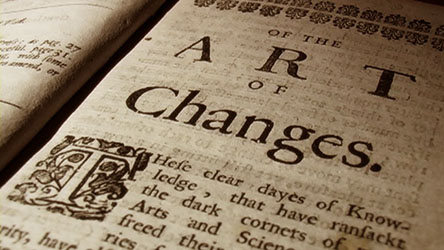
Two weeks later I visited him in Hereford and filmed the interview that now forms a significant part of the historical side of the film. I also had the opportunity to film some rare books he had access to; the first edition of the Tintinnalogia from 1668 for instance. I now had sufficient material on which to write the narration for the historical part. I then traveled the country collecting suitable materials.
Parts of the bell
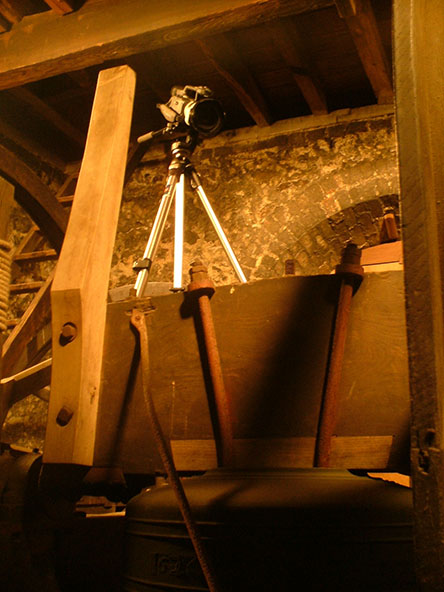
In order to present the parts of the bell, I arranged to do this at West Wickham, another local church at which I ring. The ringers were very helpful and I was able to spend several days there. The most difficult part was getting the lighting equipment up into the bell chamber, as there was only a vertical ladder going up through two floors above the ringing chamber. We eventually managed to haul everything up with ropes. Most bell chambers and ringing chambers are quite small, so I was using a wide-angle lens most of the time. To show how the bells are rung, I hired an extra camera to film the ringing chamber and the bell chamber simultaneously. This allowed for a split-screen version of ringing the bell, which is now included in the film.
Breaking the stay
I used a similar two-camera technique for the film’s ‘action sequence’: the breaking of the stay. This was one of the most technically challenging parts of the making of the film. Preparing for this scene, my dad helped me make three custom-designed stays that would break easily. We drilled holes on the side that wouldn’t be visible to the camera, and filled them with sawdust to get an explosion of particles when it broke.
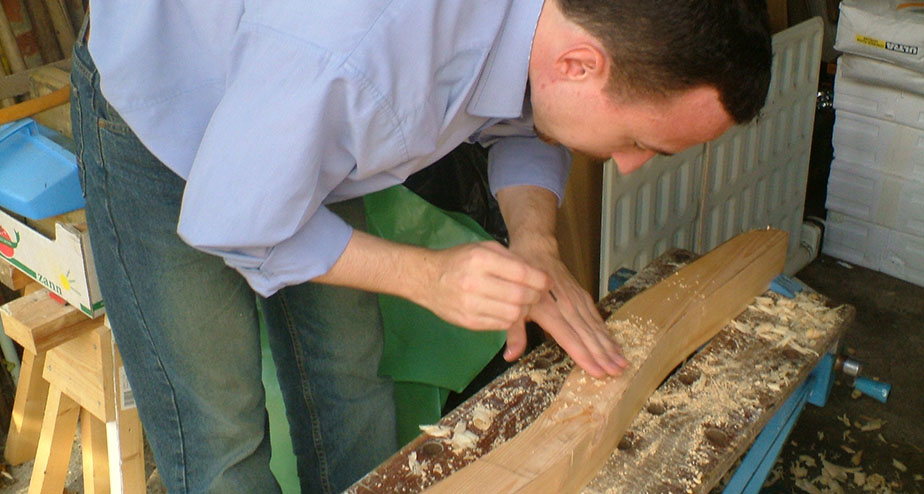
Once the stays were made, we set up the lighting and both cameras in the belfry. I took the part of the incompetent ringer who misses the sally and breaks the stay. The first take didn’t work out so well, I was unhappy with the way the stay disappeared out of the frame, and our particle effect wasn’t really visible either. We made some adjustments, and the second time we obtained really good results — this is what’s included in the film. Since we had another stay prepared, we did a third take, but the second one remained the best.
Methods
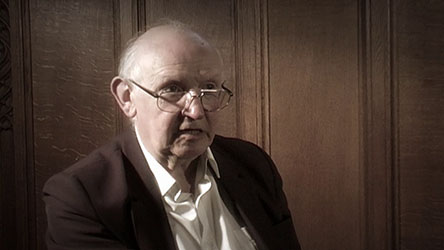
Now that the action was over, I could concentrate on the more intellectual aspects of ringing, namely methods. I asked a good friend of mine, Michael Moreton, if he would like to talk about methods in an interview, to which he happily said yes. We also recorded his seemingly unique way of teaching new ringers how to ring methods, which I was very impressed with.
I didn’t want to go into infinite detail about methods, as I thought they are better explained in books about ringing. I did however include plain changes, something I think most ringers are not too familiar with. In the film, these are shown as animations.
Ringing societies
Michael also rings at St. Paul’s Cathedral. I asked him if I could arrange a filming session at the Cathedral and he put me in touch with Alan Ainsworth. He was very helpful in allowing me to film the practice night of the College Youths, and even to film the interior of the Cathedral, for which the Cathedral Authorities assigned me a guardian, Polly, to make sure I didn’t cause any disturbance. In the film I also explored the relationship between the two major societies: John Hughes D’Aeth talks about the College Youths, and Simon Holden about the Cumberlands.
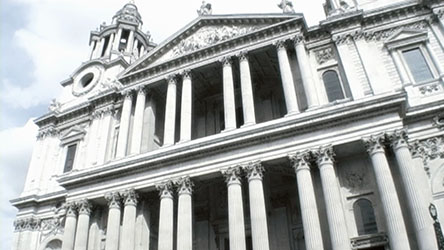
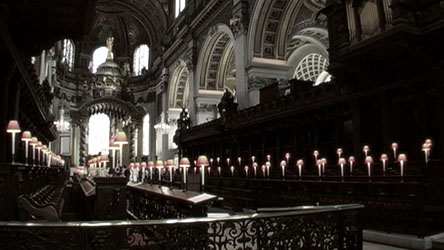
The social side
I then turned to capture the social side of ringing. Eric had organised an outing to Basildon which was the ideal opportunity to show the famous glass tower in the context of a social occasion. One of my favourite parts of the film is when Eric is explaining the method ‘London’ while driving — a portrait of a true bellringer. It was also important to show the ringers’ relationship with the Church, so I did an interview with Eric and also with the vicar at St. Mary’s, Addington.
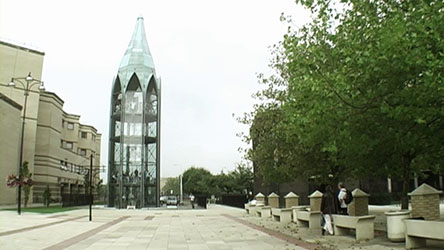
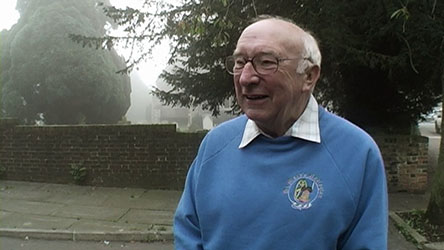
Ringing in cathedrals
Now that the local parishes had been explored, I focused my attention on ringing in cathedrals. I traveled to Exeter to visit an open practice, where Dr. Ian Campbell helped me considerably in letting me film.
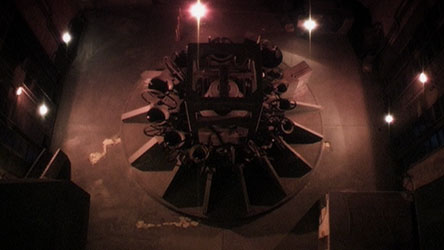
The final challenge was to film the heaviest set of bells in the world hung for change ringing: Liverpool. I contacted the ringing master, Len Mitchell who gave me a lot of support including setting up floodlighting for that huge bell chamber. Liverpool Cathedral is truly magnificent, and to this episode of the film I dedicated a lot of running time. Every bellringer should go there at least once during his or her lifetime. The lift, the ‘ring’, the tenor with two ropes, the radial bell frame…
Finishing the project
Finally, Derek Sibson talks about the Central Council and its work. In all filming took five months. A friend of mine studying at the Academy of Music in Vienna, Balázs Alpár, wrote the music score. We also rang a quarter peal of Annable’s London on 29th October 2006 at Addington to celebrate the completion of the film in style.
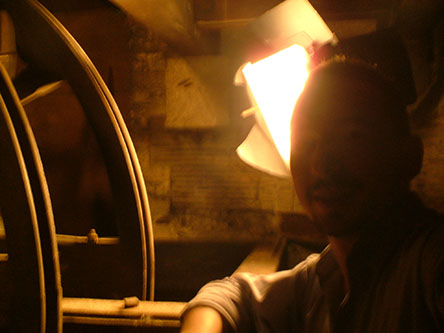
I aimed to create something that encompasses the whole of the exercise. To paint an accurate picture of the craft of bellringing as seen from the inside, as a ringer. There is so much to ringing that you can’t pack all these things into a one-hour film. But I hoped to capture the essence of bellringing and to show a glimpse of its wide and varied aspects.